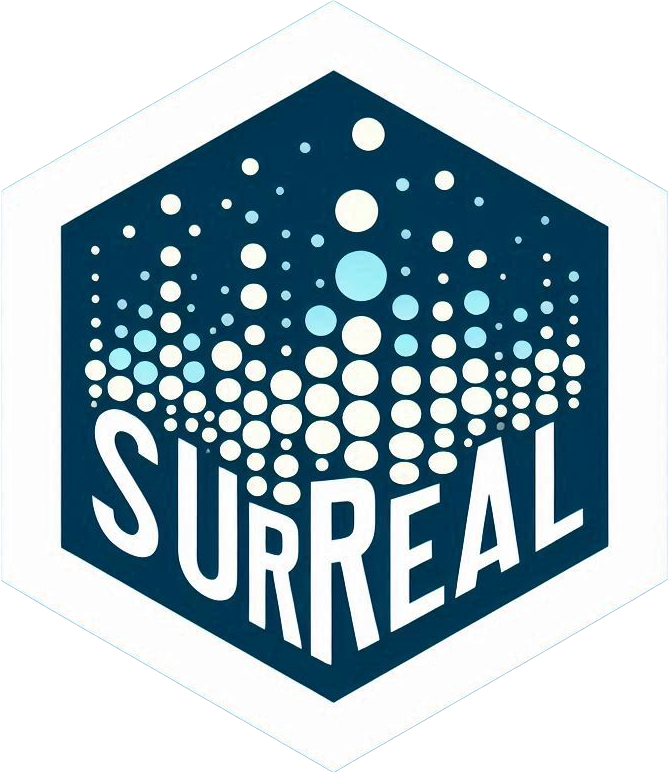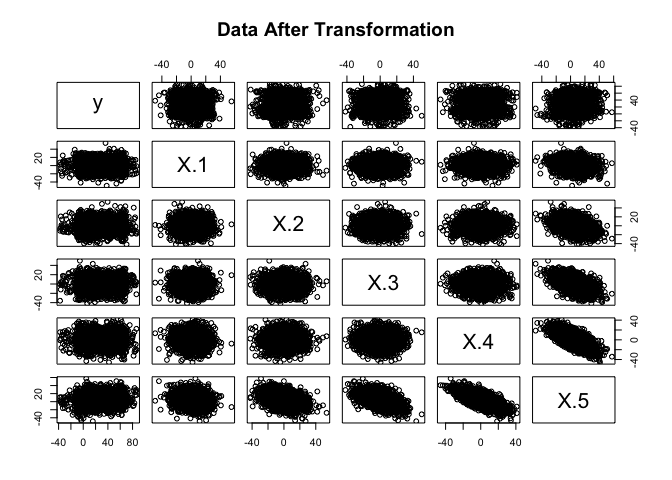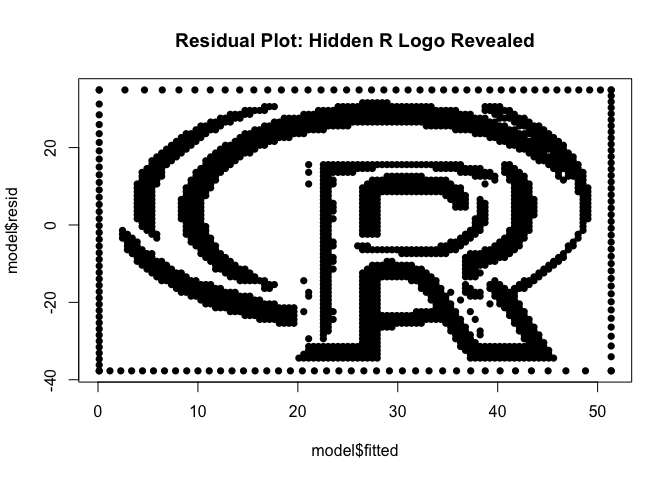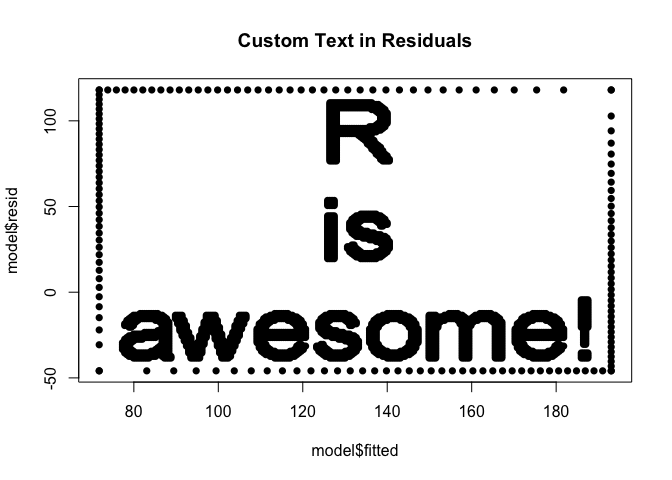
The hardware and bandwidth for this mirror is donated by METANET, the Webhosting and Full Service-Cloud Provider.
If you wish to report a bug, or if you are interested in having us mirror your free-software or open-source project, please feel free to contact us at mirror[@]metanet.ch.

surreal implements the “Residual (Sur)Realism” algorithm
described by Stefanski (2007). This package allows you to generate
datasets that reveal hidden images or messages in their residual plots,
providing a novel approach to understanding and illustrating statistical
concepts.
You can install the development version of surreal from GitHub with:
# install.packages("remotes")
remotes::install_github("coatless-rpkg/surreal")First, load the package:
library(surreal)We can take an image with x and y
coordinate positions for pixels and embed it into the residual plot.
As an example, let’s use the built-in R logo dataset:
data("r_logo_image_data", package = "surreal")
plot(r_logo_image_data, pch = 16, main = "Original R Logo Data")
The data is in a 2D format:
str(r_logo_image_data)
#> 'data.frame': 2000 obs. of 2 variables:
#> $ x: int 54 55 56 57 58 59 34 35 36 49 ...
#> $ y: int -9 -9 -9 -9 -9 -9 -10 -10 -10 -10 ...
summary(r_logo_image_data)
#> x y
#> Min. : 5.00 Min. :-75.00
#> 1st Qu.: 32.00 1st Qu.:-57.00
#> Median : 57.00 Median :-39.00
#> Mean : 55.29 Mean :-40.48
#> 3rd Qu.: 77.00 3rd Qu.:-24.00
#> Max. :100.00 Max. : -9.00Now, let’s apply the surreal method:
set.seed(114)
transformed_data <- surreal(r_logo_image_data)The transformation adds predictors that appear to have no underlying patterns:
pairs(y ~ ., data = transformed_data, main = "Data After Transformation")
Fit a linear model to the transformed data and plot the residuals:
model <- lm(y ~ ., data = transformed_data)
plot(model$fitted, model$resid, pch = 16,
main = "Residual Plot: Hidden R Logo Revealed")
The residual plot reveals the original R logo with a slight border, enhancing the image recovery.
You can also create datasets with custom hidden images or text. Here’s a quick example using text:
text_data <- surreal_text("R\nis\nawesome!")
model <- lm(y ~ ., data = text_data)
plot(model$fitted, model$resid, pch = 16, main = "Custom Text in Residuals")
Stefanski, L. A. (2007). “Residual (Sur)realism”. The American Statistician, 61(2), 163-177. doi:10.1198/000313007X190079
This package builds upon the work of John Staudenmayer, Peter Wolf, and Ulrike Gromping, who initially brought these algorithms to R.
These binaries (installable software) and packages are in development.
They may not be fully stable and should be used with caution. We make no claims about them.